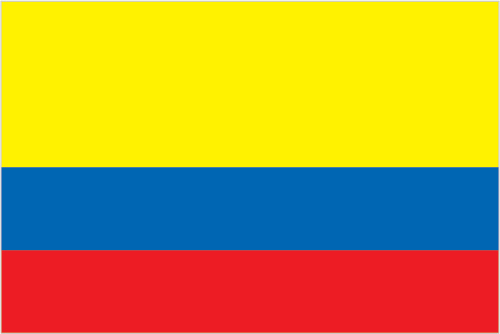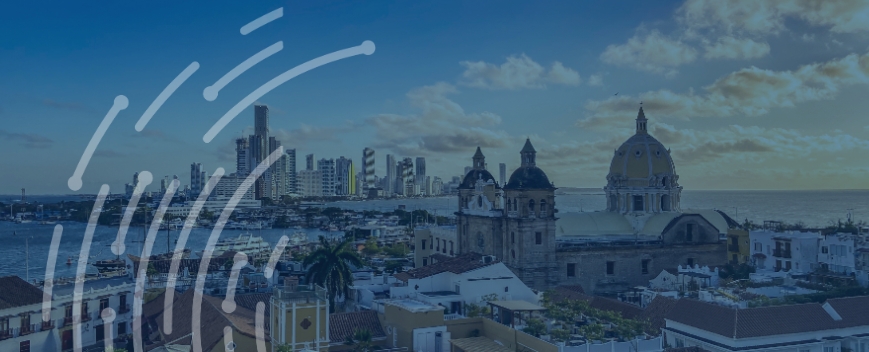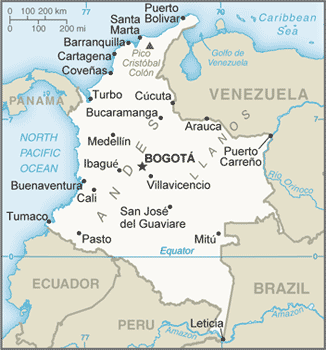Importing from Colombia


Colombia Country Profile
Official Name (Local Language) República de Colombia
Capital Bogota
Population 47,220,856
Currency Colombian Peso
GDP $271.4 billion
Languages Spanish
Phone Dial In 57
Colombia Exports Profile
Exports ($m USD) 37,766
Number of Export Products 3,410
Number of Export Partners 18

Colombia Economic Statistics
Government Website | https://www.presidencia.gov.co/ |
| Sovereign Ratings | https://countryeconomy.com/ratings/colombia |
| Central Bank | Banco de la República de Colombia |
| Currency USD Exchange Rate | 3,051.1 |
| Unemployment Rate | 9.2% |
| Population below poverty line | 27.8% |
| Inflation Rate | 5.8% |
| Prime Lending Rate | 7.5% |
| GDP | $274.1 billion |
| GDP Pro Capita (PPP) | $14,100 |
| Currency Name | Colombian Peso |
| Currency Code | COP |
| World Bank Classification | Upper Middle Income |
| Competitive Industrial Performance | 61/138 |
| Corruption Perceptions Index | 96/180 |
| Ease of Doing Business | 65/190 |
| Enabling Trade Index | 85/136 |
Access trade, receivables and supply chain finance
We assist companies to access trade and receivables finance through our relationships with 270+ banks, funds and alternative finance houses.
Get StartedImporting from Colombia
Colombia has the fourth-largest economy in Latin America and a high growth rate, ranking among the fastest growers in the OECD. Its main exports are oil, coal, coffee, and cut flowers; it is also the world’s main producer of emeralds and has vast gold reserves. The main destinations for its exports are the US, Panama, India, and the Netherlands. Colombia is an important trading partner for many of its neighbours, with whom it has signed a range of free trade agreements which facilitate and promote exports.
Columbia’s internal climate is complex. Its democratically elected government is credible and supported by the population, and committed to reducing inequality and combating the climate crisis. However, internal violence is still widespread, as low-level warfare between the government, extremist rebel groups, and drug cartels has been going on for years with little prospect of a resolution. Human rights abuses are rampant, especially in rural areas, and the police are often accused of excessive force against rebels, civilians, and activists. Drug cartels often extort or coerce farmers to plant coca crops for the production of cocaine instead of their regular crops, which could harm agricultural production and exports and increase crime.
Refugees from Venezuela have been arriving in large numbers, often on their way to the US through the Darien gap; if stronger border controls were instated, they could negatively impact intra-regional trade and reduce foreign exports. A peace treaty signed in 2016 has been somewhat successful in reducing the violence, especially in urban centres; further negotiations are ongoing. If the government manages to further reduce violence and tensions, the Colombian economy is likely to be even more successful, and the country could become a central player in the Latin American trade landscape.
Importing from Colombia: What is trade finance?
Colombia ranks 54th on the world country playing field in terms of importing, focusing mainly on importing industrial and transportation equipment, consumer goods and chemicals. Importing mainly from the USA, China and Mexico, Colombia import around $57 billion USD of goods each year.
Columbia is an upper middle-income economy and is becoming an established financial centre in Latin America
Chart Showing GDP Growth Compared to rest of world
GDP Composition for Colombia
Agriculture
6.8%
Coffee, cut flowers, bananas, rice, tobacco, corn, sugarcane, cocoa beans, oil seed, vegetables; shrimp; forest products
Industry
0.34%
Textiles, food processing, oil, clothing and footwear, beverages, chemicals, cement; gold, coal, emeralds
Services
59.2%
Map
Top 5 Exports Partners
| Country | Trade | % Partner Share |
| United States | 11,012 | 29.16 |
| Panama | 2,584 | 6.84 |
| China | 2 | 5.29 |
| Netherlands | 1,542 | 4.08 |
| Mexico | 1,537 |
Top 5 Exports Products
| Export Product | Number |
| Petroleum oils and oils obtained from bituminou | 7.9% |
| Bituminous coal, not agglomerated | 4.5% |
| Coffee, not roasted or decaffeinated | 4.3% |
| Petroleum oils, etc, (excl. crude); preparation | 2.8% |
| Gold in unwrought forms non-monetary | 2.4% |
Local Partners
- All Topics
- Colombian Trade Resources
- Export Finance and ECA Topics
- Local Conferences



















